DFH-4 (original) (raw)

Home - Search - Browse - Alphabetic Index: 0- 1- 2- 3- 4- 5- 6- 7- 8- 9
A- B- C- D- E- F- G- H- I- J- K- L- M- N- O- P- Q- R- S- T- U- V- W- X- Y- Z
DFH-4

DFH-4
Credit: NigComSat
Large Chinese communications satellite bus using a blend of Chinese and subcontracted European technologies. The DFH-4 was 3-axis stabilized and designed for use in high capacity communications and broadcasting, direct broadcasting, and regional mobile communications satellites.Payloads of up to 600 kg requiring 8,000 W power could be accomodated in the initial version; the DFH-4E enhanced version increased this to 1,000 kg / 10,000 W and introduced electric propulsion. The DFH-4S could accommodate smaller requirements with 450 kg /4000 W requirements.
AKA: Dong Fang Hong;Nigcomsat;Simon;Tian Lian;TKSAT;Tongxing Jisshu Shiyan Weixing;Tupac Katari;VeneSat;Xinnuo. Status: Operational 2006. First Launch: 2006-10-28. Last Launch: 2015-11-03. Number: 15 . Gross mass: 5,000 kg (11,000 lb).
Chinese Aerospace Corporation (CASC) announced in July 1998 that it would develop a new large geosynchronous satellite bus which would be used for variety of new generation Chinese satellites in the next century. CASC was to select a foreign company as a partner. All satellites based on this new bus would be designed, assembled and tested in China, and launched by Chinese Long March boosters. Four European companies submitted proposals. The satellite could be equipped with a mixture of C-, Ku-, and even L-band transponders, and multi-beam antenna systems. This would be a step beyond the DFH-3, to satisfy the requirements for direct broadcast services; fixed and mobile communications using very small aperture antennas; and other dedicated special services.
The final DFH-4 platform was 3 axis stabilized and equipped with a bi-propellant propulsion system. It utilized C-band for command and control. It was based on a mixture of technologies from the prior DFH-3 and European satellite technology. Specifications were as follows:
Dimensions: 2360 mm � 2100 mm � 3600mm
Payload: 600 kg
Orbit type:GEO and other orbits
Solar array output: 10,500W (EOL)
Payload power: 8,000 W
Station keeping precision: west/east +-0.05 deg; north/south +-0.05 deg
Antenna pointing precision: <0.1 deg (3 sigma)
Design lifetime: 15 years
The DFH-4E Bus was an enhanced version of the DFH-4 with greater capacity. It incorporated advanced technologies, including electrical propulsion, more efficient batteries, and multi-tiered communications module, an increased load carrying structure, more efficient thermal control, and overlap antenna holding and releasing technologies. The new triple-junction gallium-arsenide solar cells generated 65 kw per kilogram. Lithium-ion batteries replaced nickel-hydrogen in the original model, saving 80 kg.
Characteristics were as follows:
Launch Mass: 5000-5300 kg
Dry Mass: 2700 kg
Output power: 13,500 W
Payload Mass: 800-1000 kg
Payload Power: 10,000 W
Lifetime: 15 years
First flight: NigComSat, May, 2007
A further development of the DFH-4 was the the DFH-4S ("Small but Smart"). CAST began developing the DFH-4S in 2006 for an unspecified (probably Chinese military) customer. The bus introduced advanced avionics and lithium-ion batteries, and a plasma propulsion system (PPS).
Launch Mass: 4600 kg
Dry Mass: 1590 kg
Output power: 7800 W
Payload Mass: 450 kg
Payload Power: 4000 W
More at: DFH-4.
Subtopics
| AlComSat 1 Communication satellite built by CAST for Agence Spatiale Alg�rienne (ASAL), Algeria. Used the DFH-4 Bus bus. |
|---|
| APStar 6B Communicationsatellite built by CAST for APT Satellite Company Ltd.. Used the DFH-4 Bus bus. |
|---|
| APStar 6C Communication satellite built by CAST for APT Satellite Company Ltd., China. Used the DFH-4 Bus bus. |
|---|
| LaoSat 1 Communication satellite built by CAST, Laos. Launched 2015. Used the DFH-4S Bus bus. |
|---|
| NIGCOMSAT 1, 1R Communication satellite built by CAST for NigComSat LTD, Nigeria. Launched 2007 - 2011. Used the DFH-4 bus bus. |
|---|
| Paksat 1R Communication satellite built by CAST for SUPARCO, Pakistan. Launched 2011. Used the DFH-4 Bus bus. |
|---|
| Palapa N1 Communications satellite to replace the Palapa-D satellite at the 113 deg East position. |
|---|
| SJ 17 Technology satellite for CAST, China. Launched 2016. Used the DFH-4S Bus bus. |
|---|
| Tiantong-1 01 Communications satellite built by CAST for China SatCom, China. Launched 2016. Used the DFH-4 Bus bus. |
|---|
Family: Communications, Geosynchronous orbit, Military communications sat. Country: China. Launch Vehicles: Chang Zheng 3B, Chang Zheng 3BE, Chang Zheng 3C. Launch Sites: Xichang, Xichang LC2. Agency: CAST, Chinasat, CASC, CNSA. Bibliography: 2, 4, 424, 530, 6453, 12216, 12217, 12218, 12219, 12220, 12221, 12222, 12223, 12224.
Photo Gallery
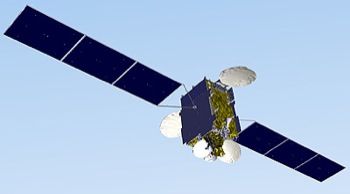 |
APStar 9 / MySat 1Credit: Manufacturer Image |
|---|
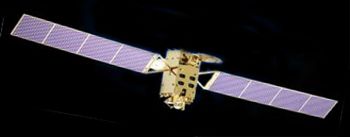 |
Belintersat 1Credit: Manufacturer Image |
|---|
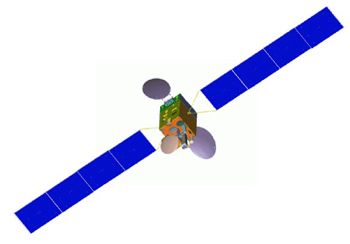 |
Nigcomsat 1Credit: Manufacturer Image |
|---|
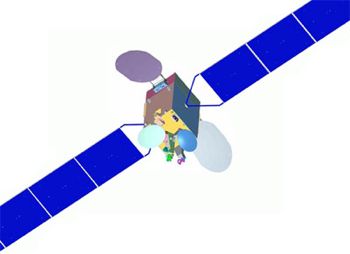 |
Paksat 1RCredit: Manufacturer Image |
|---|
 |
Sinosat-2Credit: Manufacturer Image |
|---|
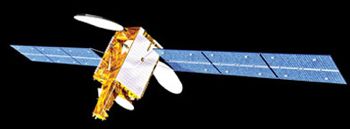 |
SupremeSat 2Credit: Manufacturer Image |
|---|
 |
Tupac Katari 1Credit: Manufacturer Image |
|---|
 |
Simon BolivarCredit: Manufacturer Image |
|---|
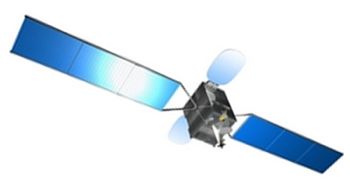 |
Zhongxing-10Credit: Manufacturer Image |
|---|
 |
Chinasat 6ACredit: Manufacturer Image |
|---|
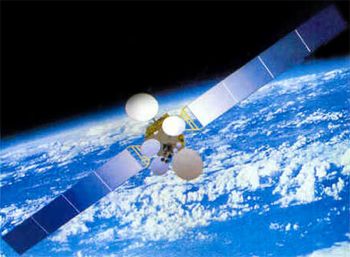 |
Sinosat-2Credit: Manufacturer Image |
|---|
2006 October 28 - . 16:20 GMT - . Launch Site: Xichang. Launch Complex: Xichang LC2. LV Family: CZ. Launch Vehicle: Chang Zheng 3B.
- Sinosat-2 - . Payload: Xinnuo 2. Mass: 5,100 kg (11,200 lb). Nation: China. Agency: SISE. Class: Communications. Type: Military communications satellite. Spacecraft: DFH-4. USAF Sat Cat: 29516 . COSPAR: 2006-048A. Apogee: 35,911 km (22,314 mi). Perigee: 35,675 km (22,167 mi). Inclination: 0.0600 deg. Period: 1,436.44 min.
First DH-4 heavy Chinese communication satellite with communications equipment provided by Alcatel Alenia. Mission failed when solar panels and antennae failed to deploy in geosynchronous orbit. This was a blow to China's prestige, since the satellite was an important part of the 2008 Beijing Olympics coverage plans. As of 2007 Mar 10 located at 91.80E drifting at 0.093W degrees per day.
2007 May 13 - . 16:01 GMT - . Launch Site: Xichang. LV Family: CZ. Launch Vehicle: Chang Zheng 3BE.
- Nigcomsat 1 - . Payload: DFH-4 Enhanced. Mass: 5,150 kg (11,350 lb). Nation: Nigeria. Agency: NCS. Class: Communications. Type: Civilian communications satellite. Spacecraft: DFH-4. USAF Sat Cat: 31395 . COSPAR: 2007-018A. Apogee: 35,789 km (22,238 mi). Perigee: 35,782 km (22,233 mi). Inclination: 0.10 deg. Period: 1,436.10 min.
Second DFH-4 communications satellite; China's first commercial payload sale, and Nigeria's first commercial communications satellite. Positioned at 42.5 deg E. Payload consisted of 4 C-band, 14 Ku-band, 8 Ka-band, and 2 L-band transponders. The antenna subsystem consisted of seven antennas.
2008 April 25 - . 15:35 GMT - . Launch Site: Xichang. LV Family: CZ. Launch Vehicle: Chang Zheng 3C.
- Tian Lian 1 - . Payload: DFH 76. Mass: 5,100 kg (11,200 lb). Nation: China. Agency: SISE. Class: Communications. Type: Military communications satellite. Spacecraft: DFH-4. USAF Sat Cat: 32779 . COSPAR: 2008-019A. Apogee: 35,806 km (22,248 mi). Perigee: 35,768 km (22,225 mi). Inclination: 0.40 deg. Period: 1,436.10 min.
China's first in a series of new data relay satellites, and the first launch of the CZ-3C, a variant of the Long March with two liquid strap-ons. The satellite will relay data from Chinese manned and military satellites, beginning with the Shenzhou mission, from geostationary orbit at 77 deg E. Configuration unknown, but possibly based on the DFH-4 platform.
2008 October 29 - . 16:54 GMT - . Launch Site: Xichang. LV Family: CZ. Launch Vehicle: Chang Zheng 3BE.
- Simon Bolivar - . Payload: VeneSat-1. Mass: 5,100 kg (11,200 lb). Nation: Venezuela. Agency: SISE. Class: Communications. Type: Civilian communications satellite. Spacecraft: DFH-4. USAF Sat Cat: 33414 . COSPAR: 2008-055A. Apogee: 35,797 km (22,243 mi). Perigee: 35,777 km (22,230 mi). Inclination: 0.20 deg. Period: 1,436.10 min. Venezuela's first satellite, a Chinese-built DFH-4 communications satellit with C-band and Ku-band transponders..
2010 September 4 - . 16:14 GMT - . Launch Site: Xichang. LV Family: CZ. Launch Vehicle: Chang Zheng 3BE.
- Zhongxing 6A - . Payload: Chinasat 6A. Mass: 5,100 kg (11,200 lb). Nation: China. Agency: SISE. Program: Chinasat. Class: Communications. Type: Civilian communications satellite. Spacecraft: DFH-4. USAF Sat Cat: 37150 . COSPAR: 2010-042A. Apogee: 35,795 km (22,241 mi). Perigee: 35,778 km (22,231 mi). Inclination: 0.10 deg. Period: 1,436.10 min. C and Ku band communications transponders..
2011 June 20 - . 16:13 GMT - . Launch Site: Xichang. LV Family: CZ. Launch Vehicle: Chang Zheng 3BE.
- Zhongxing 10 - . Payload: Chinasat 10. Mass: 5,000 kg (11,000 lb). Nation: China. Program: Chinasat. Class: Communications. Type: Civilian communications satellite. Spacecraft: DFH-4. USAF Sat Cat: 37677 . COSPAR: 2011-026A. Apogee: 35,812 km (22,252 mi). Perigee: 35,764 km (22,222 mi). Inclination: 0.00 deg. Period: 1,436.20 min. Chinese communications satellite, stationed over 103.5 deg E. AKA ChinaSat 10, Xinnuo-5, and Sinosat-5..
2011 August 11 - . 16:15 GMT - . Launch Site: Xichang. LV Family: CZ. Launch Vehicle: Chang Zheng 3B.
- Paksat 1R - . Mass: 5,120 kg (11,280 lb). Nation: Pakistan. Class: Communications. Type: Civilian communications satellite. Spacecraft: DFH-4. USAF Sat Cat: 37779 . COSPAR: 2011-042A. Apogee: 35,793 km (22,240 mi). Perigee: 35,779 km (22,231 mi). Inclination: 0.00 deg. Period: 1,436.00 min. Communications satellite to replace Paksat 1, the former Palapa C1..
2011 September 17 - . 16:33 GMT - . Launch Site: Xichang. LV Family: CZ. Launch Vehicle: Chang Zheng 3B.
- Zhongxing 1A - . Payload: Chinasat 1A / Feng Huo 2-1. Mass: 5,100 kg (11,200 lb). Nation: China. Program: Chinasat. Class: Communications. Type: Military communications satellite. Spacecraft: DFH-4. USAF Sat Cat: 37804 . COSPAR: 2011-047A. Apogee: 35,794 km (22,241 mi). Perigee: 35,781 km (22,233 mi). Inclination: 0.50 deg. Period: 1,436.10 min. Military communications satellite. First of the Feng Huo 2 series for secure digital data and voice tactical military communications..
2011 December 19 - . 16:41 GMT - . Launch Site: Xichang. Launch Complex: Xichang LC2. LV Family: CZ. Launch Vehicle: Chang Zheng 3BE.
- Nigcomsat 1R - . Mass: 5,200 kg (11,400 lb). Nation: Nigeria. Class: Communications. Type: Civilian communications satellite. Spacecraft: DFH-4. USAF Sat Cat: 38014 . COSPAR: 2011-077A. Apogee: 35,788 km (22,237 mi). Perigee: 35,785 km (22,235 mi). Inclination: 18.49 deg. Period: 1,436.10 min. Replacement for failed NigComSat-1, launched in 2004..
2012 May 26 - . 15:56 GMT - . Launch Site: Xichang. LV Family: CZ. Launch Vehicle: Chang Zheng 3BE.
- Zhongxing 2A - . Payload: Chinasat 2A / Shentong 2-1. Mass: 5,100 kg (11,200 lb). Nation: China. Class: Communications. Type: Communications satellite. Spacecraft: DFH-4. USAF Sat Cat: 38352 . COSPAR: 2012-028A. Apogee: 35,794 km (22,241 mi). Perigee: 35,780 km (22,230 mi). Inclination: 0.10 deg. Period: 1,436.10 min. First of the second generation of the Shentong series, operated by the Chinese Army to provide secure voice and data Ku-band communications to the ground forces..
2013 May 1 - . 16:06 GMT - . Launch Site: Xichang. LV Family: CZ. Launch Vehicle: Chang Zheng 3BE.
- Zhongxing 11 - . Payload: Chinasat 11. Mass: 5,000 kg (11,000 lb). Nation: China. Class: Communications. Type: Communications satellite. Spacecraft: DFH-4. USAF Sat Cat: 39157 . COSPAR: 2013-020A. Apogee: 35,794 km (22,241 mi). Perigee: 35,780 km (22,230 mi). Inclination: 0.55 deg. Period: 1,436.10 min. Communications satellite operated by China Satcom with 45 C-band and Ku-band transponders..
2013 December 20 - . 16:42 GMT - . Launch Site: Xichang. Launch Pad: xxx. LV Family: CZ. Launch Vehicle: Chang Zheng 3BE.
- Tupac Katari 1 - . Payload: TKSAT 1. Mass: 5,100 kg (11,200 lb). Nation: Bolivia. Class: Communications. Type: Communications satellite. Spacecraft: DFH-4. USAF Sat Cat: 39481 . COSPAR: 2013-075A. Apogee: 35,802 km (22,246 mi). Perigee: 35,773 km (22,228 mi). Inclination: 0.0700 deg. Period: 1,436.13 min.
Bolivia's first communications satellite, named after the historical Bolivian leader Julian Apasa Nina (Tupac Katari, 1750-1781). The satellite was built by China's CAST using a DFH-4 bus. It was controlled by Chinese-trained Bolivian engineers at the Amachuma ground station.
2015 September 12 - . 15:04 GMT - . Launch Site: Xichang. Launch Complex: Xichang LC2. LV Family: CZ. Launch Vehicle: Chang Zheng 3B.
- Tongxin Jisshu SW1 - . Mass: 5,000 kg (11,000 lb). Nation: China. Class: Communications. Type: Communications satellite. Spacecraft: DFH-4. USAF Sat Cat: 40892 . COSPAR: 2015-046A. Apogee: 35,795 km (22,241 mi). Perigee: 35,777 km (22,230 mi). Inclination: 0.0800 deg. Period: 1,436.05 min.
Tongxing Jisshu Shiyan Weixing yi hao (Communications Engineering Test Satellite No. 1). Military satellite; speculation was that it was the first in a constellation of ballistic missile early warning satellites. The booster's upper stage reached a 208 km x 635 km x 27.1 deg parking orbit 10 minutes after launch and coasted to the equator, where a second burn at 16:01 GMT sent the stage and payload to a 195 km x 35,814 km x 27.1 deg geotransfer orbit.
2015 October 16 - . 16:16 GMT - . Launch Site: Xichang. Launch Complex: Xichang. LV Family: CZ. Launch Vehicle: Chang Zheng 3B.
- Apstar 9 - . Mass: 5,000 kg (11,000 lb). Nation: China. Class: Communications. Type: Communications satellite. Spacecraft: DFH-4. USAF Sat Cat: 40982 . COSPAR: 2015-059A. Apogee: 35,763 km (22,222 mi). Perigee: 35,727 km (22,199 mi). Inclination: 0.0900 deg. Period: 1,433.98 min. Communications satellite for Hong Kong-based APT Satellite, with C- and Ku-band payloads..
2015 November 3 - . 16:25 GMT - . Launch Site: Xichang. Launch Complex: Xichang. LV Family: CZ. Launch Vehicle: Chang Zheng 3B.
- Zhongxing 2C - . Payload: Chinasat 2C / Shentong 2-2. Mass: 5,000 kg (11,000 lb). Nation: China. Class: Communications. Type: Communications satellite. Spacecraft: DFH-4. USAF Sat Cat: 41021 . COSPAR: 2015-063A. Apogee: 35,793 km (22,240 mi). Perigee: 35,780 km (22,230 mi). Inclination: 0.55 deg. Period: 1,436.09 min. Second of the second generation of the Shentong series, operated by the Chinese Army to provide secure voice and data Ku-band communications to the ground forces..
2016 June 29 - . 03:21 GMT - . Launch Site: Jiuquan. LV Family: CZ. Launch Vehicle: Chang Zheng 4B.
- Shi Jian 16-02 - . Payload: SJ 16-02. Nation: China. Class: Surveillance. Type: ELINT. Spacecraft: DFH-4. USAF Sat Cat: 41634 . COSPAR: 2016-043A. Apogee: 616 km (382 mi). Perigee: 596 km (370 mi). Inclination: 75.00 deg. Chinese technology satellite..
2016 August 6 - . 16:22 GMT - . Launch Site: Xichang. Launch Complex: Xichang LC3. LV Family: CZ. Launch Vehicle: Chang Zheng 3B.
- Tiantong-1 01 xing - . Nation: China. Class: Communications. Type: Communications satellite. Spacecraft: DFH-4. USAF Sat Cat: 41725 . COSPAR: 2016-048A. Apogee: 35,903 km (22,309 mi). Perigee: 35,751 km (22,214 mi). Inclination: 5.00 deg. First Tiantong-1 satellite, was built by CAST and operated by China Satcom; it supported a mobile communications network operated by China Telecom. The satellite reached geostationary orbit and was drifting east over the Indian Ocean..
2016 November 3 - . 12:43 GMT - . Launch Site: Wenchang. Launch Complex: Wenchang LC101. LV Family: CZ-NGLV. Launch Vehicle: Chang Zheng 5.
- Shi Jian 17 - . Payload: SJ-17. Nation: China. Class: Communications. Type: Communications satellite. Spacecraft: DFH-4. USAF Sat Cat: 41838 . COSPAR: 2016-065A. Apogee: 35,804 km (22,247 mi). Perigee: 35,771 km (22,227 mi). Inclination: 0.80 deg.
First launch from Wenchang Space Centre in Hainan. The CZ-5 configuration used four large liquid strapon boosters around a central 5 metre diameter core stage, with a second stage consisting of a stepped cylinder similar in configuration to the Delta 4/H-2A second stages. On this mission a Yuanzheng-2 third stage was also installed. The payload was Shi Jian 17, an experimental communications technology satellite with a secondary experiment to observe orbital debris. After launch at 1243 UTC the CZ-5 second stage achieved a 170 km parking orbit at 1257 UTC. At 1307 UTC the second stage made a six-minute-long second burn to 178 x 29127 km x 19.5 deg. The YZ-2 separated at 1313 UTC and shortly afterwards made a burn to 212 x 35802 km x 19.5 deg. YZ-2 then coasted to apogee and restarted at 1836 UTC to place itself in near geosynchronous orbit. The SJ-17 payload separated at about 1855 UTC into a 35886 x 38811 km x 0.8 deg orbit and drifted around the GEO arc. On Nov 12 it entered a 35771 x 35804 km geostationary orbit over 162.9E.
2017 January 5 - . 15:18 GMT - . Launch Site: Xichang. Launch Complex: Xichang LC2. LV Family: CZ. Launch Vehicle: Chang Zheng 3B.
- Tongxin Jishu SW 2 - . Payload: TJS-2. Nation: China. Class: Surveillance. Type: ELINT. Spacecraft: DFH-4. USAF Sat Cat: 41911 . COSPAR: 2017-001A. Apogee: 35,801 km (22,245 mi). Perigee: 201 km (124 mi). Inclination: 27.50 deg.
See TJS 2 (Huoyan-1 ?). Tongxin Jishu Shiyan Weixing 2 (Communications Technology Experiment Satellite 2) was developed by the Shanghai team. The lack of public information about the TJSW satellites has led to the suspicion that they may really be for defense purposes, possibly for non-communications purposes such as signals intelligence or missile early warning. TJSW 2 made the burn to circularize its orbit on Jan 6 at 0730 UTC over 114E.
Home - Search - Browse - Alphabetic Index: 0- 1- 2- 3- 4- 5- 6- 7- 8- 9
A- B- C- D- E- F- G- H- I- J- K- L- M- N- O- P- Q- R- S- T- U- V- W- X- Y- Z
© 1997-2019 Mark Wade - Contact
© / Conditions for Use